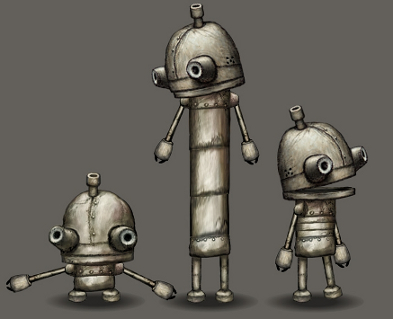Overview
Tinker follows the adventures of a tiny robot, also named Tinker, as he travels through his unusual and quirky world. Starting off as an outcast 'clunker', the player modifies and changes Tinker over the course of the game, growing more attached as they add everything from a voice module to advanced mechanical legs. Players can choose to build Tinker how they want, in order to overcome the challenges ahead.
Core Mechanics
Tinker is presented in a 3D perspective, with the player controlling Tinker in the 3rd person view. Rather than an open world or levels per se, the game is spread over a number of instanced regions that players can explore. 3D platforming and puzzling elements are combined to create a challenging and entertaining experience. Core to the game's focus is the emphasis on customizing and upgrading Tinker itself. Players will discover discarded components of other robots, miscellaneous technology, and other items that they can use to customize Tinker. The intention of making Tinker so varied and customization is that each player will have their own idea of 'their' Tinker, making each playthrough varied and unique. Every aspect of Tinker is customization, from the colour of individual sections to the type of legs. Whether a player opts for four hydraulic legs which can magnetize to ceilings, or a single 'pogo-leg' that allows Tinker to bounce higher, an immense amount of potential is available.
Environment
Tinker makes use of a number of environments, ranging from the initial derelict junkyard sections to swanky skyrise building sections. The instanced nature of the world, with smaller areas connected to 'central hubs' allows for a huge variance in the explorable environments. The environments also correspond to the type of customization a player can find - more industrious hydraulics may be found in the junkyards. In the more affluent areas of the game, players may find better looking paints or more high-tech equipment. As players progress through these environments, the puzzles will also change to reflect these environments. In junkyards, fixing large pieces of machinery will allow the player to progress. When a player reaches something like a power plant, mirror puzzles are introduced. Theming content around each environment makes each of them feel more different and interesting for the player.Concept Art from Machinarium, a 2D game with a similar art style to that envisioned in Tinker.
